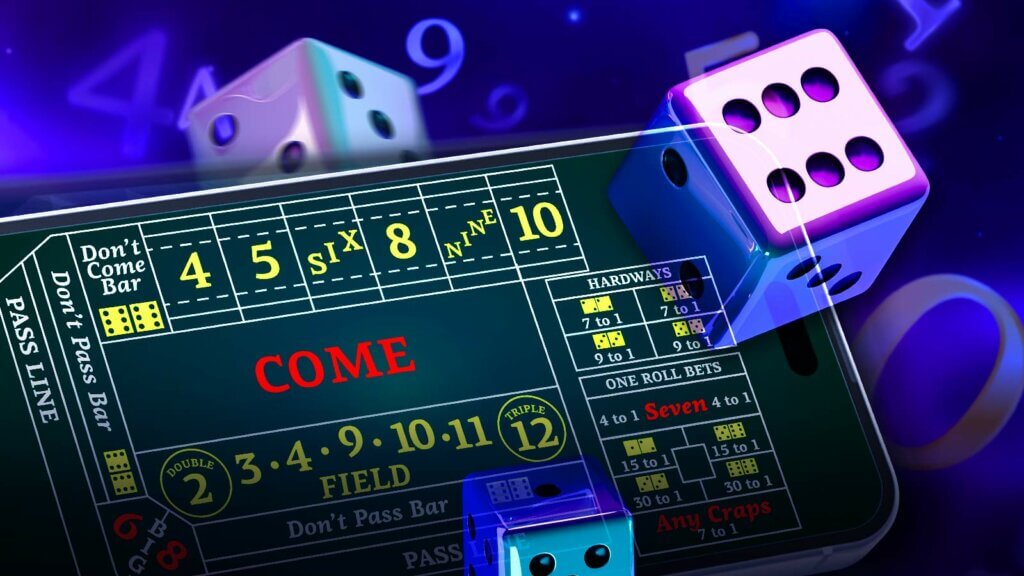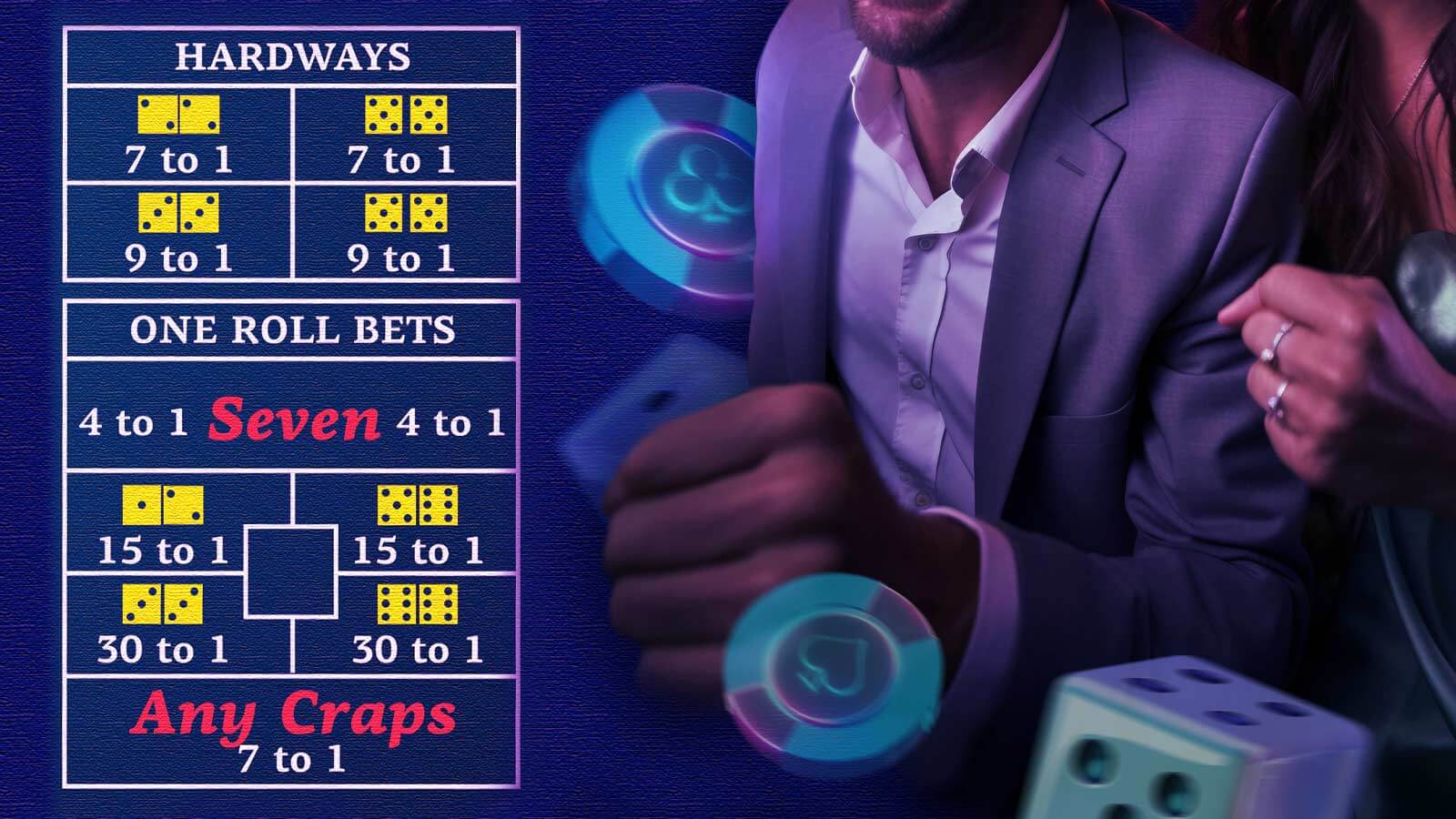How to Use Math To Win At Craps
KingCasinoBonus receives money from casino operators every time someone clicks on our links, influencing product placement. The compensation we receive does not impact our recommendation, advice, reviews and analysis in any way. Our content will always remain objective, independent, straightforward, and free from bias.

If you’re new to live craps casinos, our online gambling experts will improve your game with smart tactics. Let’s discover how probability and statistics can turn the craps table in your favor. Read on to unveil the secrets to ace using math when playing craps.
On this page
Best Method To Play Craps
Craps is a typical game of chance present in almost every new online casino we trust. It’s one of the most played dice games, but despite what you may think, the opportunity is just one factor determining whether you earn cash and how much.
Experienced players can effortlessly attune their brains to make split-second calculations to raise the prospect of being victarious or reduce the risk of losing. Most online casinos in the UK offer special offers for both newly-registered players and active players.
This guide explores how you can use simple maths to your advantage.
Note that the methods, tips, and strategies we offer do not guarantee you will be victorious but will allow you to significantly increase your chances and help you become a better craps player.
Understanding The Odds

The first step toward improving your probability of earning at craps is understanding the different bet types and their respective odds.
Some bets are easier to earn but pay out less; others are riskier but have greater odds and pay more. The house advantage and the odds vary on the type of bet.
In craps, there are two types of odds: true odds and payout odds. When estimating your potential payout, you must consider the payout odds, where the house edge is already factored in and will give you the payout amount with the house edge already deducted from it.
True odds, however, will provide you with the payout amount without considering the house edge.
A brief example
For instance, pass line bets, an essential bet in craps, payout at even funds (1:1) with a low 1.41% house edge.
You will double your funds if you hit a seven or an 11 on the first roll. If you roll any value from 4 to 10 (excluding 7), you continue rolling the dice until you get that number again before you get a 7, which you will lose.
Your bet will also fail if you roll a 2, 3, or 12.
The odds in craps, depending on the bet, can range from 1:1 to 30:1. Odds may also be represented with a percentage value, but fractional odds are used in the UK.
For instance, a bet with odds of 9:5, like rolling 4 or 10 on a place bet, pays £9 for every £5 wagered. Knowing the odds lets you easily calculate your potential earnings relative to your wager.
Probability of different bets
| Dice roll | Number of ways to roll that number | Probability |
|---|---|---|
| 2 | 1 | 2.78% |
| 3 | 2 | 5.56% |
| 4 | 3 | 8.33% |
| 5 | 4 | 11.11% |
| 6 | 5 | 13.89% |
| 7 | 6 | 16.66% |
| 8 | 5 | 13.89% |
| 9 | 4 | 11.11% |
| 10 | 3 | 8.33% |
| 11 | 2 | 5.56% |
| 12 | 1 | 2.78% |
Note that the probability of you rolling a specific number can vary greatly. For instance, the likelihood of you throwing one on the first and one on the second dice is 2.78%.
The probability of you rolling 4 is 33.34%, while the probability of rolling a seven first is 66.66%. This is because there are six possible ways to hit a combination of 7 and only three ways to roll a 4 (3 and 1, 2 and 2, and 1 and 3).
Meanwhile, your chance of rolling a 7 or an 11 on the initial (come out) roll is 22.22%, and there’s just over an 11% chance of losing your bet by rolling 2, 3, or 12.
The probability of rolling a specific point number
| Point number | Probability of rolling point number |
|---|---|
| 4 | 33.34% |
| 5 | 40% |
| 6 | 45.45% |
| 8 | 45.45% |
| 9 | 40% |
| 10 | 33.34% |
The combinations you can roll to get a specific number
| Value of 2-dice number | Number of ways to roll that value | Combinations for rolling that value |
|---|---|---|
| 2 | 1 | 1-1 |
| 3 | 2 | 1-2, 2-1 |
| 4 | 3 | 2-2, 1-3, 3-1 |
| 5 | 4 | 1-4,4-1, 2-3, 3-2 |
| 6 | 5 | 3-3, 1-5, 5-1, 2-4, 4-2 |
| 7 | 6 | 1-6, 6-1, 3-4, 4-3, 2-5, 5-2 |
| 8 | 5 | 4-4, 2-6, 6-2, 3-5, 5-3 |
| 9 | 4 | 3-6, 6-3, 4-5,5-4 |
| 10 | 3 | 6-4, 5-5, 4-6 |
| 11 | 2 | 5-6, 6-5 |
| 12 | 1 | 6-6 |
Regardless of the type of bet, there are a specified number of ways to roll a number between 2 and 12 using the two dice.
Knowing the number of possible combinations for rolling a specific number by heart is craps math 101.
It allows you to be more aware of the probability of rolling a given number and consequently determine your bet size depending on the amount of risk you are willing to take.
For instance, by looking at the above table, you’d know that it is more probable to hit a 6, 7, and 8 than a 2 or 12.
Choosing The Right Bets

There are more than two dozen bets in craps, and each bet type has a specific probability and odds of being victorious.
Memorising the odds for a particular bet will allow you to calculate your potential payout instantly. The odds also indicate the level of risk involved with a specific type of bet.
The essential thing here is to know the odds and probability factors before you sit at the table. Once you start playing, you must factor in these elements to make a more informed wager.
Craps bets can be multi-roll or single-roll. As an unofficial rule, single-roll bets are ill-advised as they have a high house edge that can reach more than 15%.
Due to the high house edge and a single dice roll determining the outcome, one-roll bets are considered unfavourable to the player.
The pass line bet is generally considered most favourable as you lose after the come-out roll only if the shooter rolls 2, 3, or 12.
If they roll 7 or 11, you are victorious, and any point number leads to one or more additional throws.
Managing Your Bankroll

Before betting on craps, you must create a budget and devise a strategy. It’s best to start with a small bank to test your strategy before you devote a bigger budget.
Remember that craps are highly dynamic, and you can easily get caught in a losing streak and be left with no funds.
Losing is inevitable in craps, and the house edge is here to ensure the house always gets a piece of your earning. Generally, you should bring only funds you are prepared to lose.
Before registering on an online gambling platform, each player should read the T&C of the websites and revise their rights and obligations as a UK gambler.
When you eventually decide to play, if you have a budget of £500, on average, you should be able to participate in 50 bets worth £10 (if £10 is the minimum bet).
Advanced Strategies

The Martingale system and the Fibonacci sequence are two popular betting strategies many players employ. However, they have no proven methods for earning at craps, as both strategies involve high risk.
The former system entails betting the same amount of funds for as long as you keep earning.
If you are on a losing streak, you should double your previous wager until you earn money and make even.
So, if you bet £10 and get an earning, the next bet is also £10. If you lose, your next bet is £20. If you lose the £20 bet, your next bet is £40, and so on.
The Fibonacci system explained
The Fibonacci sequence is a numbered sequence where every number is the sum of the two numbers preceding it, i.e. 0,1,1,2,3,5,8,13,21, etc. Applying it to betting means you calculate the bets based on the numbers in the sequence; each wager is the sum of the two previously made bets.
For instance, if you bet £10 and lose, you bet £10 again.
If you lose the second £10 wager, the third bet should be £20.
If you lose the £20 wager, you bet £30 next, and so on. If you get to earn, you move two numbers down the sequence.
Final Thoughts
With the information, tips, and strategies we provide in the above text, you can start using basic mathematical calculations to boost your chances of getting earnings at craps.
Note that no matter how much thought you put into it, the outcome is still left to the proverbial roll of the dice.
However, maths allows you to get more control over how much you lose and helps you determine if the bet is worth the risk.
Using basic maths when shooting craps is considerably more advantageous than betting blindly without any real strategy. We also recommend players not to fall for the gambler’s fallacy and believe that past results will influence future outcomes.